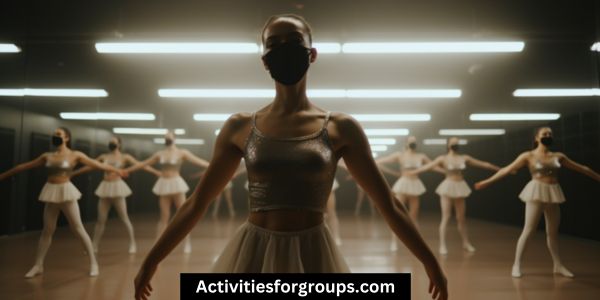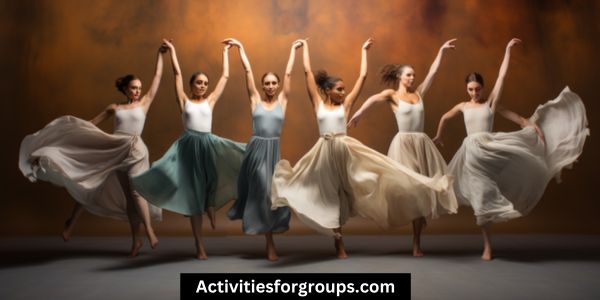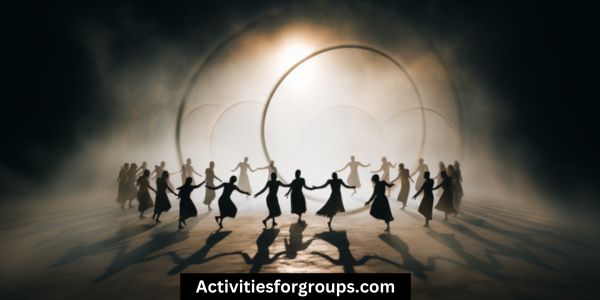Are you interested in teaching group dance classes for beginners? It’s a great way to share your love of dance and make some extra money!
This article will give you the tips you need to organize a successful class, from choosing a dance style to planning the class.

Get ready to start inspiring others to dance!
Choose a Dance Style
When choosing a dance style for your group classes, consider the goals and abilities of your students. Creating a syllabus will help you decide which dance style to focus on, as you can identify the skills your students need to learn, the music that will best highlight those skills, and the moves that will help them build upon that knowledge.
To make the most of your classes, it’s important to choose music that your students will enjoy and that will be appropriate for the dance style. Consider the tempo and genre of the music, as well as the lyrics. If you’re teaching a classical dance, for example, you may want to choose instrumental music so that your students are more focused on the technique and rhythm of the dance.
When creating your syllabus, make sure you include a variety of moves that will challenge your students and keep them engaged. You can also use various exercises to help your students practice the skills they’ll need for the dance style, and activities that will encourage them to build on their knowledge.
Set Objectives
Once you’ve chosen a dance style and created a syllabus, it’s time to set objectives for your group classes. Developing goals and assessing the needs of your students is important when organizing a class. Start by determining what the main focus of the class should be, for example, technique, choreography, or performance. This will help you create a plan for each class and make sure you’re consistently teaching students the necessary skills and steps.
As you plan each class, think about how you can assess the progress of your students. Set achievable goals, such as mastering certain fundamental steps and techniques, and create a plan for how you’ll reach them. This will help you ensure the class is progressing and that your students are actively learning.
Once you have a plan, you can communicate your objectives to your students. Explain to them the goals of the class and the expected results. You can also encourage your students to take ownership of their learning and ask them to set their own individual goals.
Secure a Venue

Now that you’ve set your objectives, it’s time to secure a venue for your group dance classes. Depending on the type of dance you are offering, you’ll need to find a suitable space that can accommodate the number of people in your class. Consider the size of the room, the lighting, the music selection, and the dress code.
| Space Requirements | Considerations |
|---|---|
| Size | Room size to accommodate the number of people in your class |
| Lighting | Bright enough to allow for visibility of movement |
| Music | Selection appropriate for the dance style |
| Dress Code | Appropriate attire for the dance style |
Make sure to check the local regulations as some venues may require a permit or license to host a dance class. Additionally, be sure to check with the venue to ensure that the sound system is adequate for the class. If you plan on hosting multiple classes over a long period of time, you may want to consider negotiating a discounted rate with the venue.
When you’ve found the ideal venue, be sure to book it in advance to ensure that it is available for your classes. Once the venue is secured and the class is planned, you can move on to the next step for setting up your group dance classes.
Recruit Students
Now that you have secured a venue for your group dance classes, it’s time to start recruiting students. Networking and marketing tactics are key for drawing in new members.
Reach out to local dance studios, gyms, and other fitness centers to post fliers or offer referrals. You can also create an online presence to help spread the word. Create an email list, social media page, and website to share information about the classes. Make sure to include details about the venue, day, and time of the classes.
In addition to online marketing, leverage your existing network to help you recruit students. Ask friends and family to spread the word about your classes. You can also offer incentives such as discounts or referral bonuses to encourage people to come. Ask current students to post about the classes on their own social media accounts. Word-of-mouth is a powerful tool, so make sure to reward those who help you bring in new students.
Finally, create a memorable experience for students. Offering refreshments, hosting social events, and rewarding participation are all simple yet effective ways to make your classes stand out. Keep your classes fun and upbeat, and tailor it to the needs of your students.
With the right combination of marketing, networking, and engagement, you can successfully recruit and retain students for your group dance classes.
Plan the Class

Once you’ve recruited students for your group dance classes, it’s time to start planning the class. Begin by considering the type of dance you’ll teach and how long each class will run. You should also adjust the tempo to make sure it’s suitable for beginners.
Once you have the basics in place, you can start to plan out the lesson plan. Make sure to break the class into sections and include practice drills to help the students become more confident and comfortable with the steps. You should also plan out how you’ll transition between the different sections and how you’ll go about teaching the choreography.
Frequently Asked Questions
How Many People Should I Have in the Class?
Finding the right teacher and selecting the right space are important for your group class. It’s best to have a maximum of 12-15 participants to ensure everyone gets the attention they need.
What Kind of Dance Floor Should I Use?
When selecting a dance floor, look for a suitable space that offers a good surface for dancing. Consider the type of material, size, and any other features that may be important to the type of dance.
What Type of Music Should I Play?
Finding the right music for your dance classes can be tricky. Consider finding instructors who can help you choose the best music for your classes. Ask them what type of music they think would be best for your beginner dancers.
How Often Should I Schedule Classes?
You should consider the time commitment and class size when deciding how often to schedule classes. Balance the frequency of classes with the availability of students and instructors.
How Much Should I Charge for the Classes?
Think about your marketing strategies and pricing models to decide how much to charge for your classes. Consider costs and competition when setting a fee.
Conclusion
Organizing group dance classes for beginners can be a rewarding experience. You just need to choose the right dance style, set objectives, secure a venue, and recruit students.
With a little planning, you can create an enjoyable and engaging class that will have your students grooving to the beat in no time.
So go ahead and get out there and show the world what you can do!




Leave a Reply